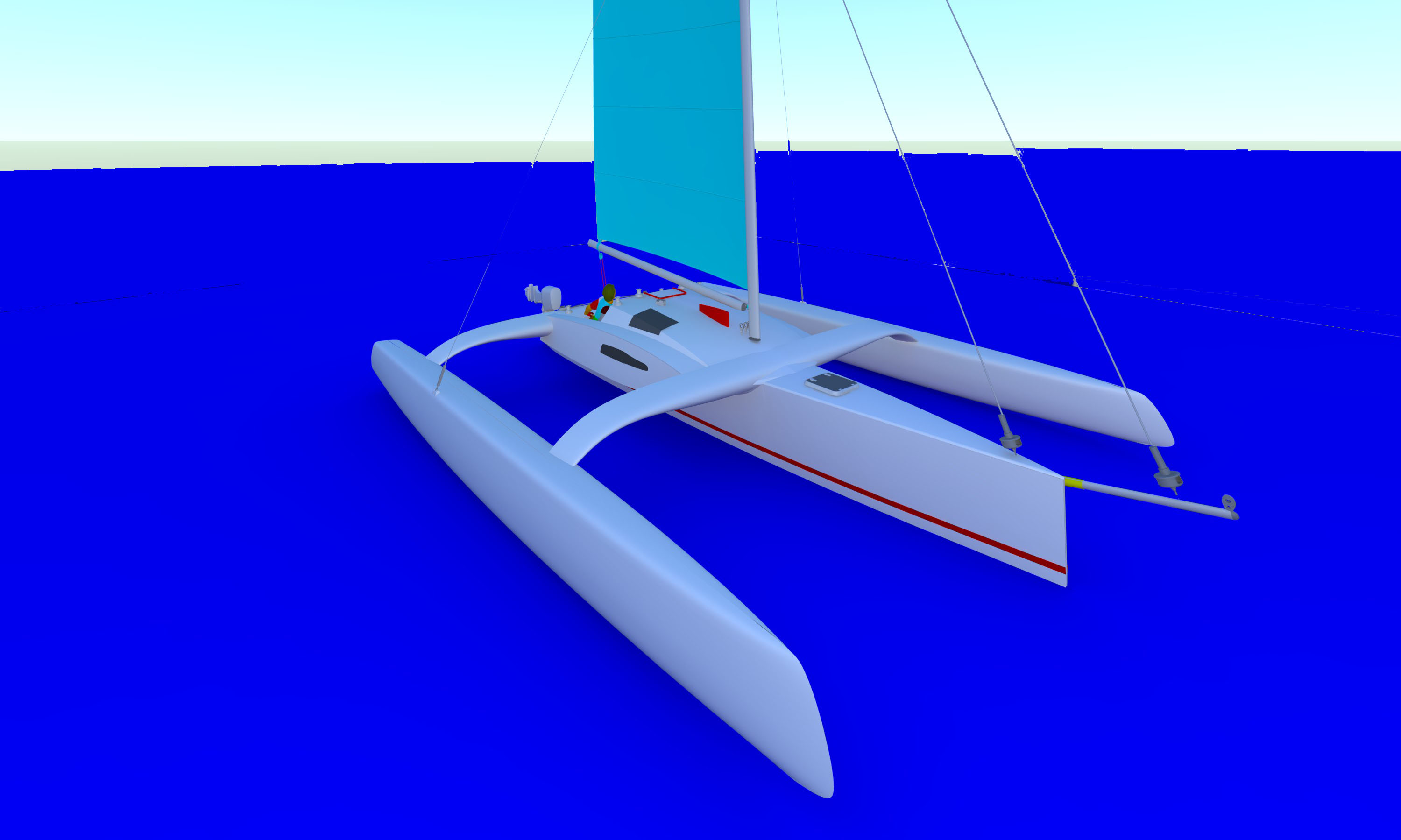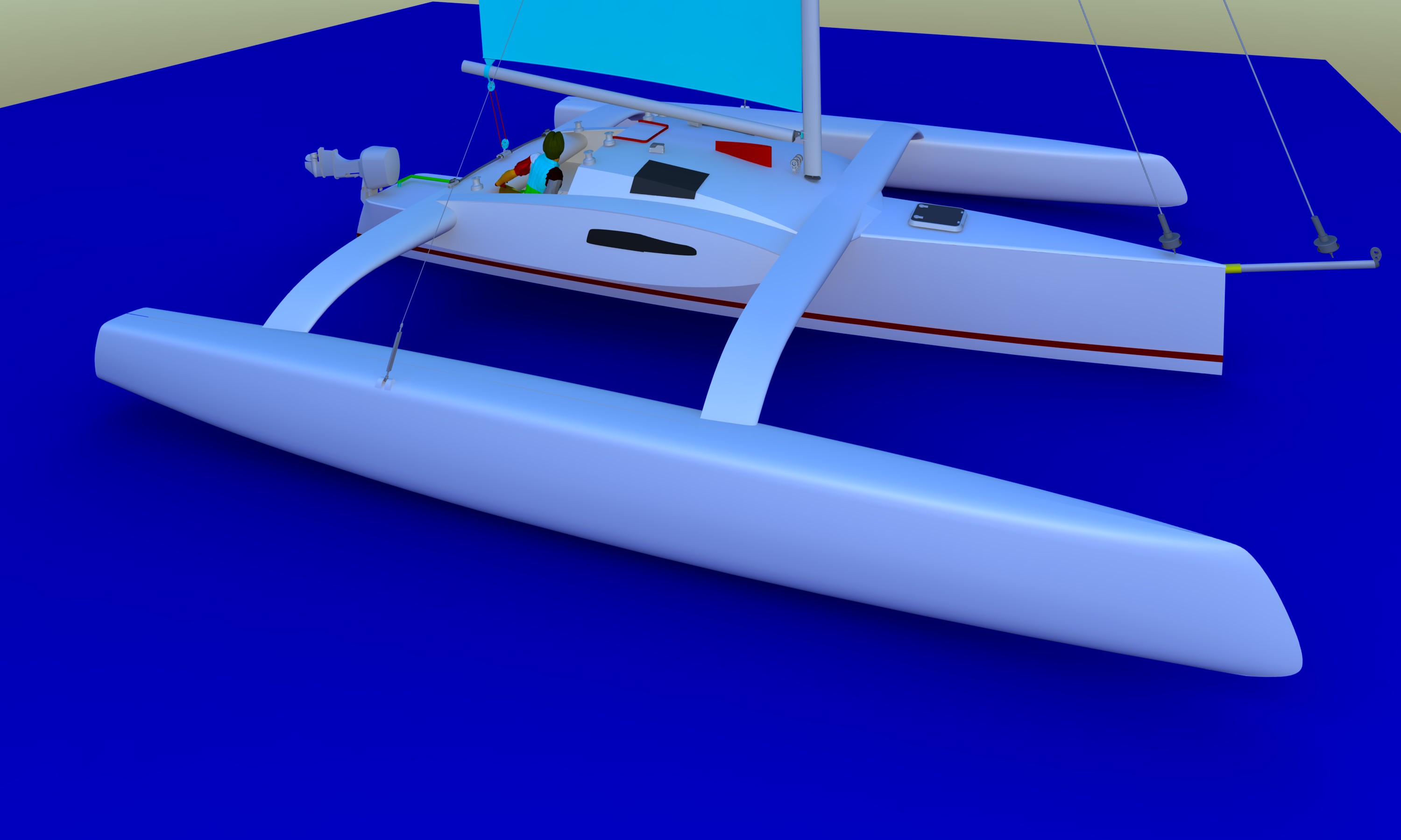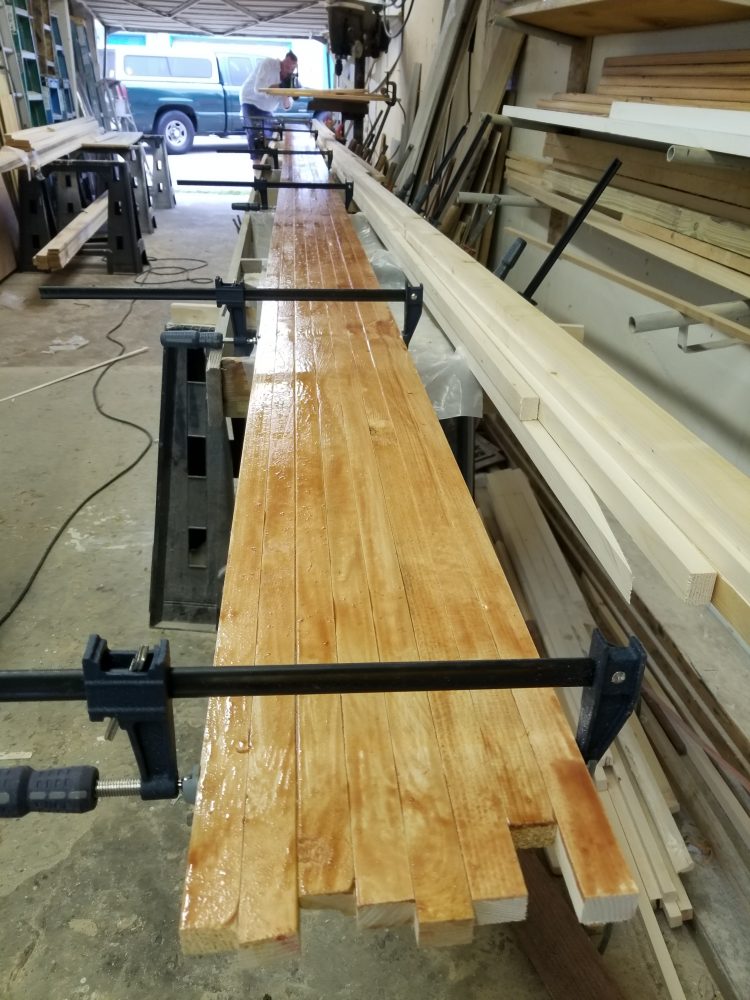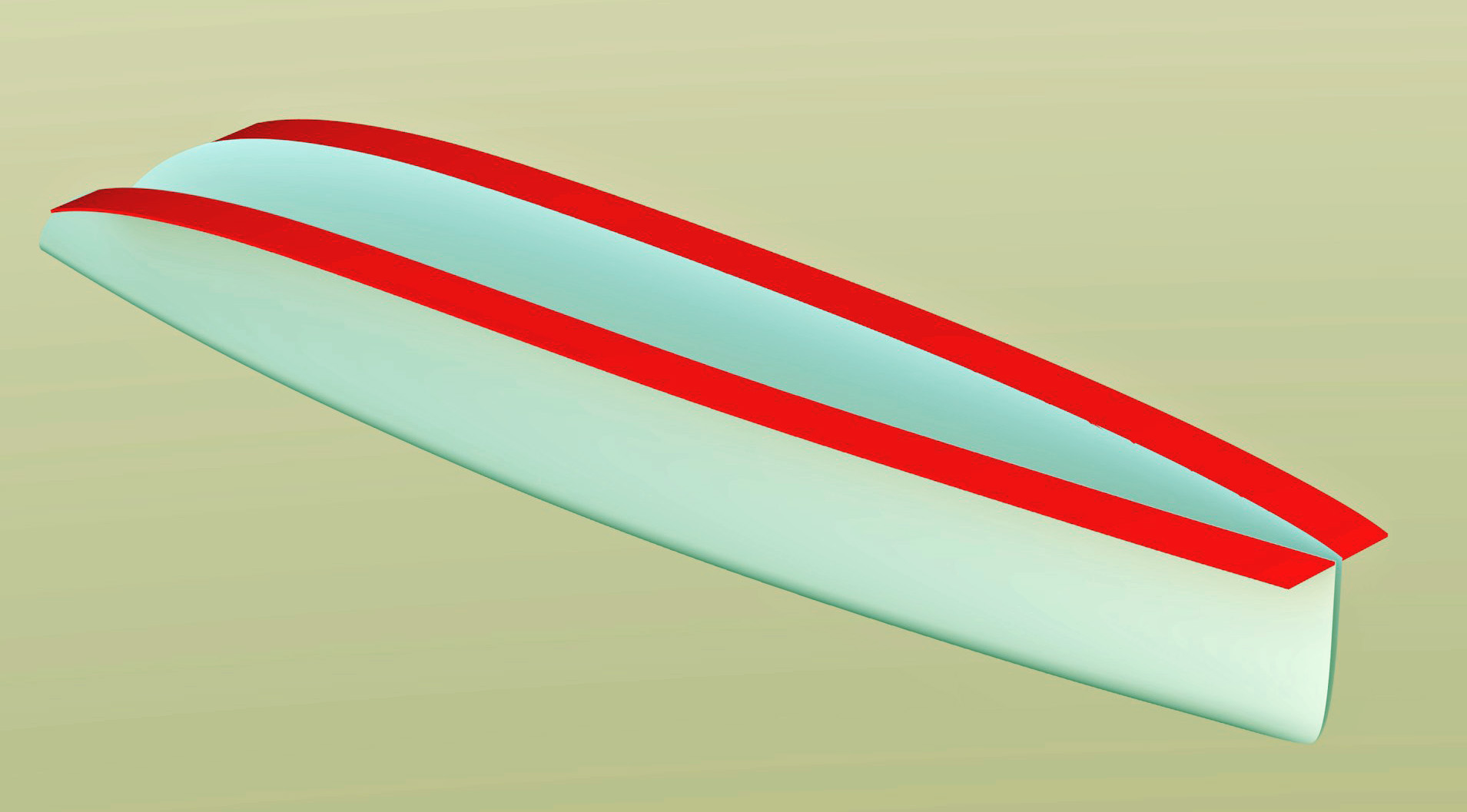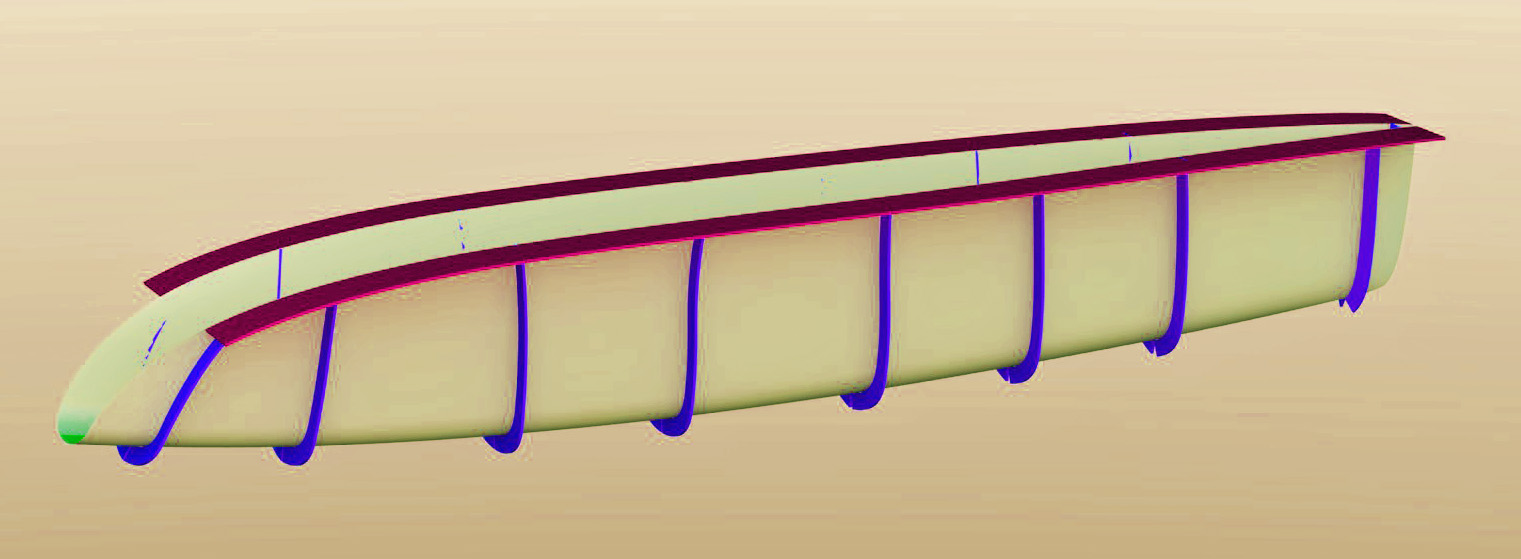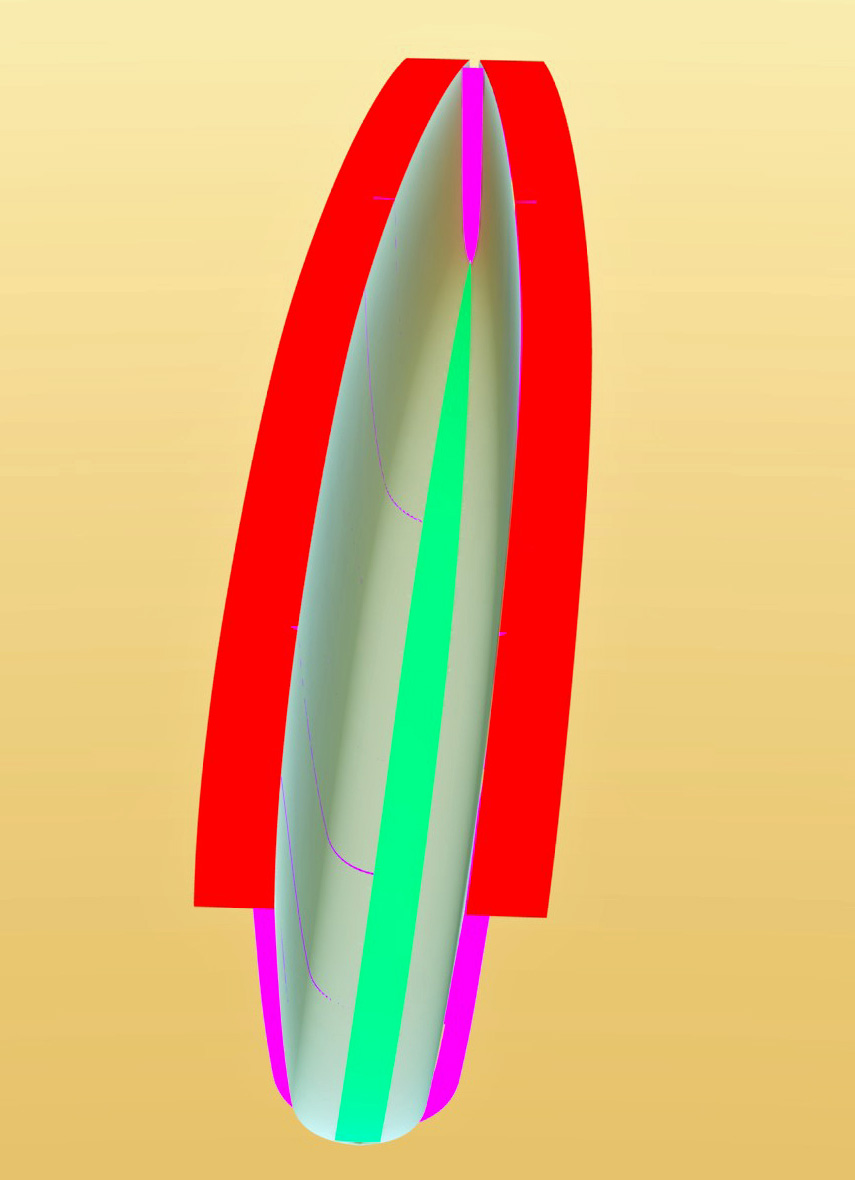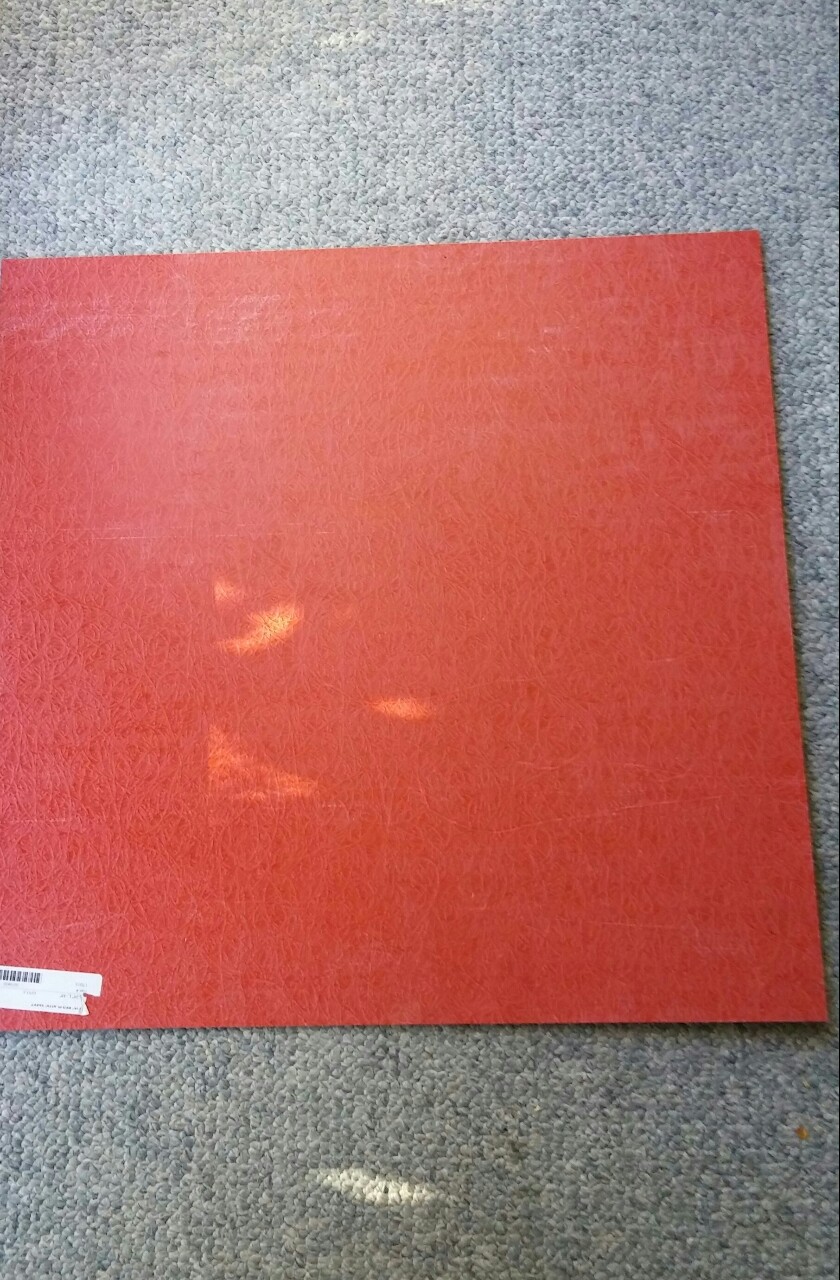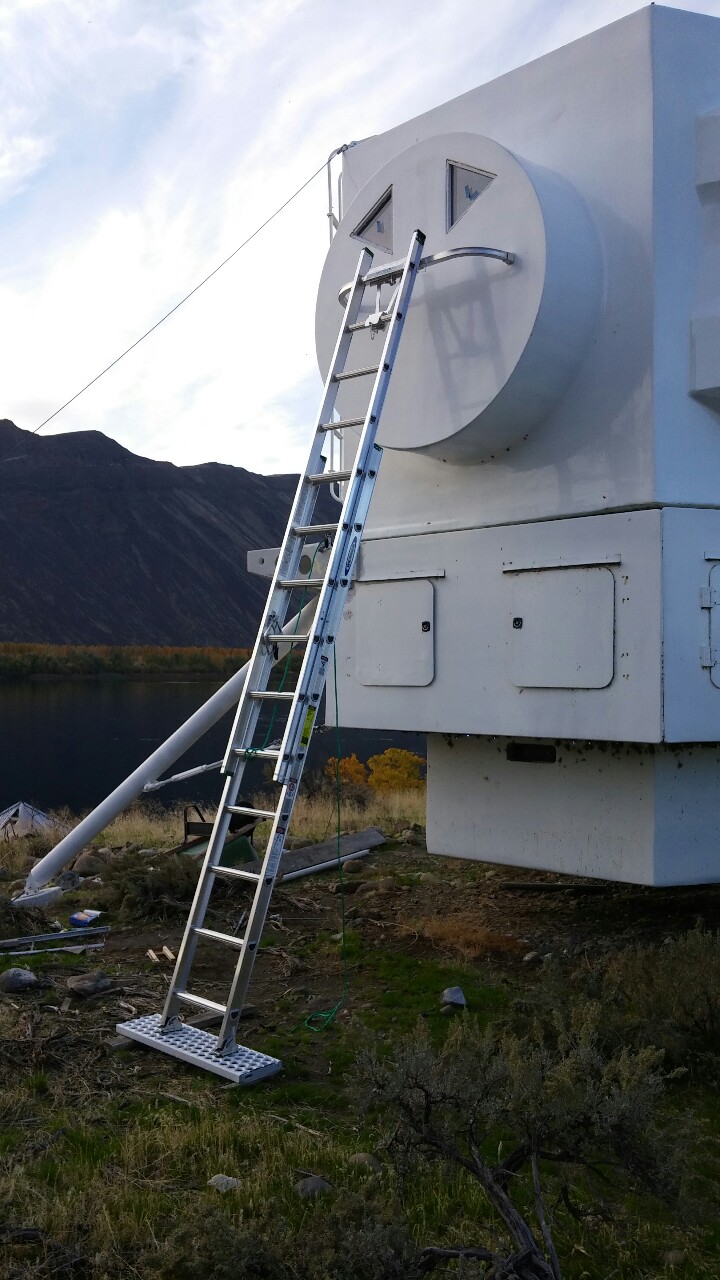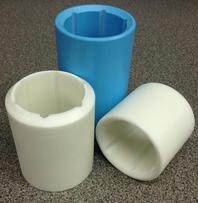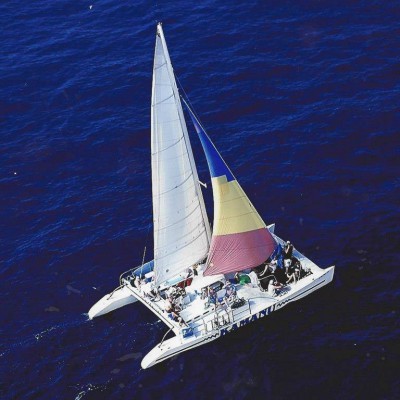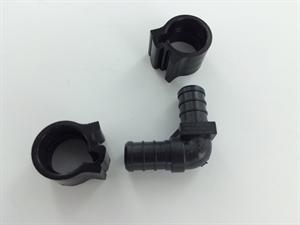This demountable 26′ trimaran is being built here in the PNW. CM cylinder molded developed plywood/epoxy.
Toss the outboard and add a rowing rack aft to make it a R2AK competitor. I will publish interior next week. BOA 22.5′ or 6.86m.
Category Archives: Building Technique
Building power cat hulls
I took on the job of building a set of hulls for Kurts 28’ power cat design which we stretched to 31’ by adding about 2.5 inches to every station. We upped the stringer size by 30% and glassed with 8oz rather than 6oz but otherwise stuck with the plan and laminate schedule. We used multiple layers of 8 and 10oz to make up biax tapes, i find it makes for easier fairing and allows for tapering the buildup. We did a half-way-to-yacht quality fairing job, primed with 545 and installed cleats, hatches, fuel tanks, and fuel fills. There will be lightweight 25 hp engines mounted on rear transoms. We finished both hulls and shipped to the owner in maine, who is going to build the cross arms and center cockpit over the winter. I really can’t recommend committing to building a boat over the summer in sarasota, florida in a non-airconditioned space, but, in the spirit of running a marathon, and other ridiculously painful ways to enjoy yourself, we did it. Total build time, including purchasing, hardware, and mounting on a trailer for shipment, was in the neighborhood of a thousand hours. LOTS of pictures after the break-
Stringers
CM Female mold
For a few decades now I have considered rapid composite hull building construction to be the holy grail of boatbuilding. I published and presented a technical paper on this topic at the 1992 Marine Applications of Composites conference. I built the hulls for my Formula 40 trimaran using the same techniques. A few other catamarans have been built using these techniques. I never have had time to properly write this up as a manual.
I’m still not sure that there is any need for rapid construction any more. I just saw a picture of a race starting line with a row of $3 million to $5 million cats racing. Maybe I really miscalculated the business. Oh well, too late now.
The only other multi designer that I know of working the problem is Kelsall with his flat bagging table KSS process. I see an armload of problems with it. Besides, with that process, one still has to torture the laminate into shape, cut darts into it, then add the 0 degree laminate over the darts, still. And fair it.
What if you could instead build a rapid female mold, and bag the exact and final hull in it in one step? Here we go.
Back in the late 80s when I build my trimaran, a couple of the steps were very successful, and two of them, exhausting. Those two I have improved on.
Those are; I coated the inside of the hull with epoxy. Then sanded it smooth. Way too much work. I now recommend using 545 or some other epoxy primer paint instead. The second was that I coved the hull “gutter” with bog, and then sanded it smooth. Even as a 30 something then, it was insanely hard.to do. Now I prefer to fit a piece of cardboard sonotube first. Then once it is fit properly, bog under it. It creates a rebate on the part that extra protective biaxial roving can be added to.
The first step is to create two cylinder molded reflected hull panels. These can be done with non waterproof glue to save cost. This mold will never go to windward. The insides of the panels are best filled and sanded smooth at the scarphs while the panel is flat like a table.
The two panels are wired together just like the usual CM hull, and a deck flange is added.
The difference between this and the usual CM is that the bulkheads are added to the outside of the hull instead of the inside. Once the final hull shape is achieved.
Red is the flange, purple, the bulkheads, and green the cardboard sono gutter.
GPO-3
I got the GPO-3 fiberglass sheet from Online Metals dot com. I hoped to substitute it for the more expensive G-10. Looks like it worked. It is smooth like G-10 though in the picture above it looks rough.
This 2 foot by 2 foot sheet was $10. Picked it up myself. Compare to same size G-10 at McMaster Carr at $47 plus some $20 shipping.
The red probably means it is phenolic. Both of these are fire resistant.
The panel looks like it was made with chopper gun, but it will be used for low load applications, so no worry.
They did used to be a friendly neighborhood supplier. They have been bought by Thyssen Krupp and have a new corporate bureaucracy feel now. Good prices though.
When Not To Use VHB Tape
VHB tape is wonderful stuff to stick things together. It was created for attaching windows to things, with no fasteners. However, I just had an illustrative example of when not to use it.
I was very impressed with the VHB tape on the lunar lander dome. It had a steel frame to stick to. Straight and smooth.
Maybe out of inertia, I also put it on the little triangular windows of the lunar lander. Later I realized the tape looked too wide on those tiny windows and I vowed to trim it back when I bought a tall enough ladder to reach.
I got the ladder. It turned out that all I had to do was push a bit and the windows folded back in. So I could then remove the tape.
Two lessons. For VHB tape to work well, the contact surface must be both flat and smooth. Many of you can do that. I seem to not have that skill nor ability in hard to reach places.
The second lesson is the VHB tape must be kept dry. Due to no ladder, I could not protect it with my caulk.
My triangular windows are now stopped in and bedded with caulk. The caulk can span the sketchy surface and gaps.
If you can do and flat, fair and smooth contact surface, go for it. If not, use adhesive caulk, like the System 3, two part polyurethane.
In contrast, I have a solar powered motion light stuck above the front door. It was stuck on with a couple of strips of VHB tape. Turns out the light is defective and won’t work. I not only can’t remove it, I can hang from it. And swing. Gonna take a chisel maybe.
Plastics Guide
Online Metals oddly has one of the nicest plastics surveys I’ve seen. I keep bugging them to carry G-10, but not yet. They do have a GPO 3 which sounds similar to G-10.. I will have to get some and see.
http://www.onlinemetals.com/productguides/plasticguide.cfm
Aero Rig Bearings at IBEX
These bearings seem like a big improvement over what we usually have to do for the unstayed rotating masts. In the past builders have had to machine a bearing out of a giant chunk of slick plastic. Most of the plastic was ground off and wasted and the cost ran into thousands. http://www.glidebearings.com/
Spherical bearings like the Tides units would have been perfect, but were not nearly large enough. Bendy materials like carbon fiber require spherical bearings to keep from binding under load, or as Rob Denny does, have a very loose fit.
These kind of are of the loose fit variety. I see the bearing having a fairly close fit to the round mast, but deflecting with the mast. I have not detailed this yet but will. The bearing will need a fiberglass sleeve around it to protect it and keep it round. I see this whole unit captured in a looser fit.
Contact Tim Creighton at Glidebearings tim@glidebearings.com
Kamanu at 30?
Is it possible that Kamanu is 30 now? I did the working drawings in ’84 I remember. Am pretty sure it was launched by Schooner Creek Boatworks in ’85. http://kamanu.com
Cylinder molded developed plywood/epoxy. My first USCG certified passenger cat. Am sure Derek will froth if he hears about a 30 year old CM cat still going out every day.
Non Metallic Plumbing Fittings
Non-Metallic PEX Fittings
Pex piping was one of the discoveries I made on the Lunar Lander project. It is used in place of PVC especially since it can survive freezing. The plumbers used metal joint fittings, which must be destroyed for the piping to be revised.
At the IBEX conference I found these non-metal pex clamps. www.flairit.com www.iplumb.tv .They can be installed with only pliers instead of a crimping machine that resembles bolt cutters. An improvement on an improvement. Made in Chile. There, better pic.
Construction Materials of the Future
Its a very exciting time to be an innovating designer and builder.
http://ow.ly/wlabV
